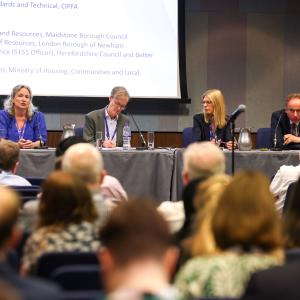We should not get hysterical at the impact of an ageing population, but must understand that it will inevitably lead to lower economic growth. James Lloyd’s previous post on this issue ‘missed the wood for the trees’
James Lloyd writes wittily about the new condition of ‘age hysteria’ that he claims to have spotted. But unfortunately then goes on to display the ‘wantonly myopic, narrow vision’ that he criticises in others.
He is not alone in this, of course. Most economic commentators also continue to assume that the costs of an ageing society are limited to those associated with healthcare and other age-related impacts. But this is to miss the wood for the trees. The much bigger issue is the impact of an ageing society on economic growth itself.
The key issue is that household consumption is 60% of UK GDP. Therefore today’s ageing society is bound to experience lower economic growth, for the simple reason that older people spend less, and also have lower incomes as they reach retirement.
This is the opposite of the situation from the mid-1980s, when the UK economy was experiencing the benefits of the Baby Boom that had occurred between 1946-70. The average Boomer turned 25 in 1983, and the next years saw large numbers of young adults setting up home for the first time, and then reaching their peak spending age as their families grew up.
Office of National Statistics data shows that households headed by someone in the 30-49 age range spent an average of £30K in 2011, compared to £27K spent by those in the 50-64 group. Spend then dropped rapidly, with 60-74-year-olds spending £20K, and those 75 and over spending just £14K. No amount of stimulus or quantitative easing is going to change these numbers, for the simple reason that older people essentially represent a replacement economy, as they already own most of what they need.
We can easily see the impact of this pattern in the UK economy by using the age of 55 years as the typical moment when the kids leave home and spending starts to drop. In 2000, there were 15 million people in the over-55 age bracket, and this number had been relatively stable since 1970.
But today their numbers are rising rapidly, due to the ageing of the Boomers. The average Boomer turns 55 this year, and by 2015 there will be 19 million in this age group. By 2020, there will be 21 million and there will be 23 million in 2030. They will then be 43% of the total over-20 population, compared to just 31% back in 1950.
No society in history has ever contained so many older people. But this is surely something to celebrate, as it is due to the remarkable increases in life expectancy that have occurred over the past century. In 1900, for example, life expectancy was just 50 years, compared to around 80 years today. And people today are not only living longer, but are also healthier and more mentally alert for longer.
The corollary of ageing populations is that the economy will grow at much slower rates than when people are younger and in their wealth-creating years. But this is surely a trade-off that all of us are happy to accept. The only issue is that our expectations for economic growth need to adapt to this new paradigm, rather than assuming that the only impact will be a future increase in age-related healthcare spending.
Paul Hodges is chairman of consultancy IeC and co-author of Boom, gloom and the new normal: how the western Baby Boomers are changing demand patterns, again









